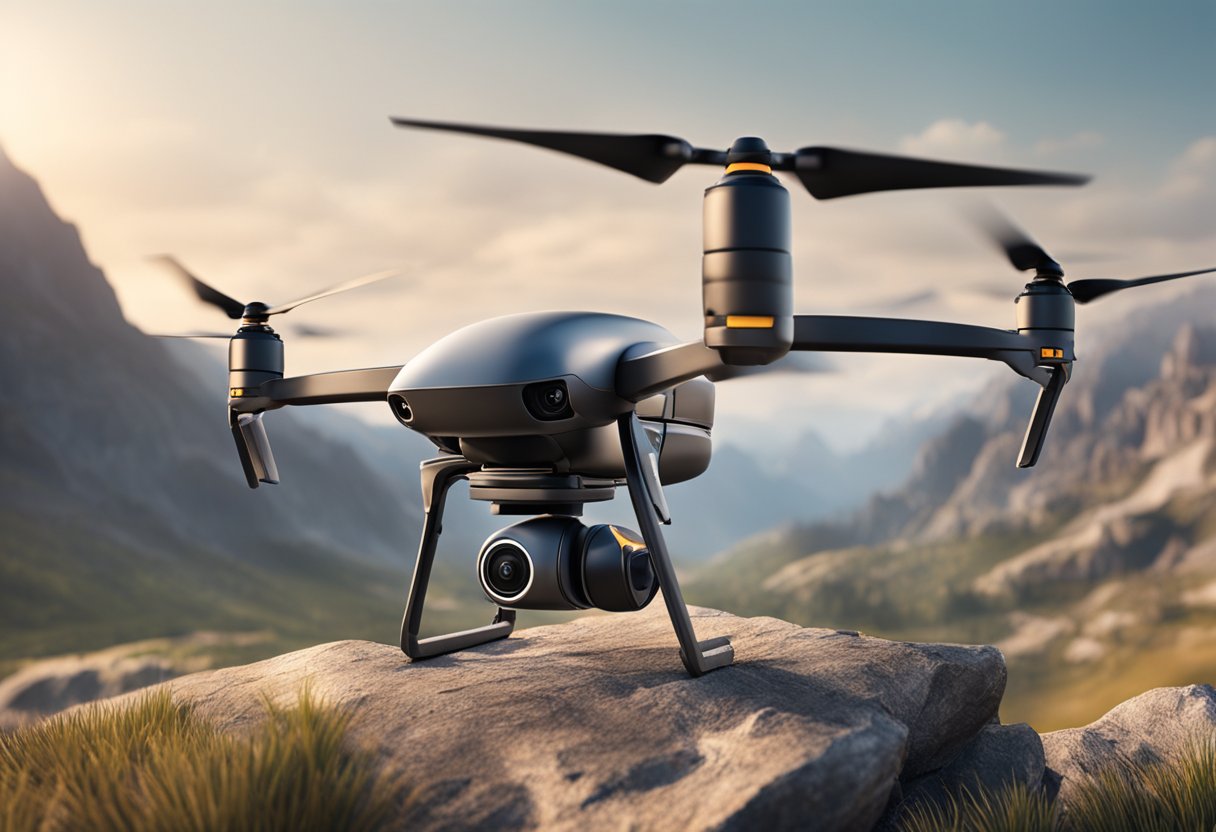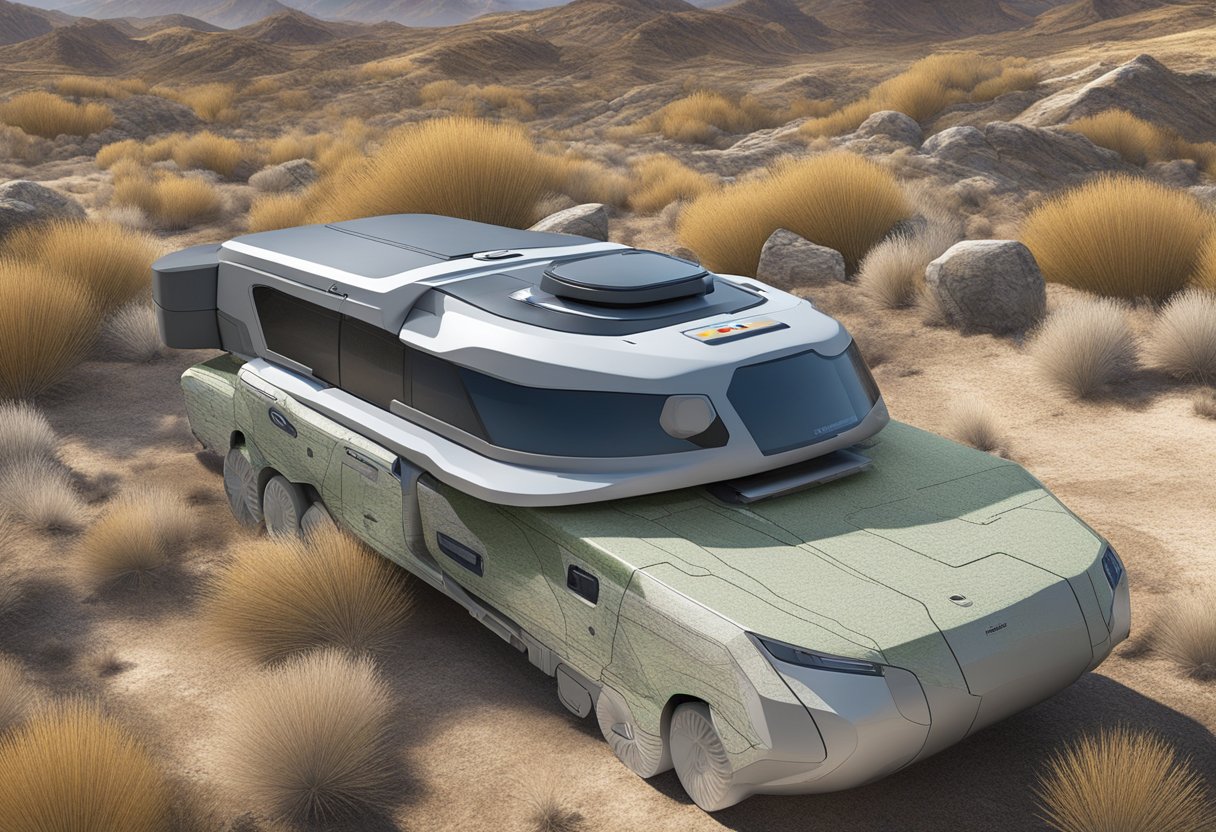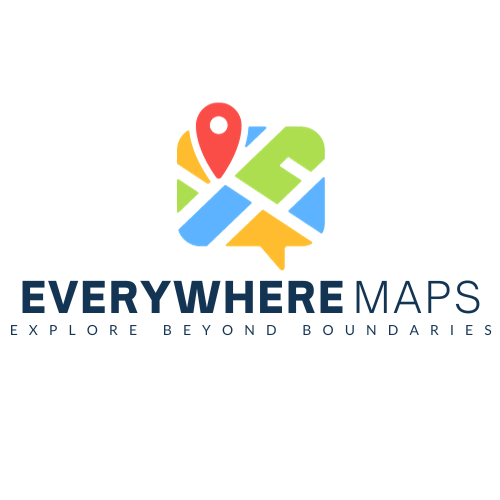Map Like a Boss: Tech Meets Terrain in the Latest Mapping Tech
Mapping technology has come a long way from paper maps and compasses. With the advent of cutting-edge technology, the world of mapping has been revolutionized. From AI-powered mapping tools to IoT-enabled terrain tech, the possibilities are endless. In this article, we’ll explore the exciting world of mapping technology and how it’s changing the way we navigate the world around us.

The Lay of the Land: AI’s Role in Modern Mapping
AI has been a game-changer in the world of mapping technology. With the power of machine learning, AI-powered mapping tools are able to analyze vast amounts of data to create accurate and detailed maps. These maps can be used for a variety of purposes, from urban planning to disaster response. AI has also made it possible to create 3D maps and models, which can be used for everything from virtual reality simulations to architectural design.
When Gadgets Gab: The Interplay of IoT and Terrain Tech
IoT-enabled terrain tech is another exciting development in the world of mapping technology. With the help of sensors and other IoT devices, mapping technology can now “see” and “sense” the world in new ways. This has led to the development of new mapping tools that can detect changes in terrain, weather patterns, and even traffic flow. These tools can be used to create real-time maps that are constantly updated with the latest information.
Key Takeaways
- AI-powered mapping tools are revolutionizing the world of mapping technology.
- IoT-enabled terrain tech is changing the way we “see” and “sense” the world around us.
- The possibilities for mapping technology are endless, from virtual reality simulations to disaster response.
The Lay of the Land: AI’s Role in Modern Mapping
https://www.youtube.com/watch?v=LZ1psf9NhiE&embed=true
As technology advances, so does the way we map and understand our terrain. From the early days of Inertial Measurement Units (IMUs) to the age of Artificial Intelligence (AI), we have come a long way in the world of mapping.
From IMU to AI: The Tech Evolution of Terrain Mapping
IMUs were once the go-to technology for mapping terrain, but now we have cutting-edge AI algorithms that can do the job better and faster. Machine learning and AI spatial interpolation have revolutionized the way we map terrain, allowing us to create more accurate and detailed maps than ever before. With AI, we can analyze vast amounts of data and create detailed models of the natural environment.
Community and Healthcare: Mapping for the Greater Good
Mapping technology is no longer just for military and government use. It has now become an essential tool for community and healthcare workers. With AI-powered mapping tools, we can map out areas that need healthcare services and identify areas that are at risk of natural disasters. This helps us better prepare and respond to emergencies and provide better healthcare services to those in need.
The Environmental Impact: AI’s Footprint on Nature’s Map
As we continue to rely on AI for mapping, we must also consider its impact on the natural environment. AI algorithms require vast amounts of energy to run, and the production of hardware for AI technology has a significant environmental impact. However, AI can also help us better understand and protect the natural environment. By mapping out areas that are at risk of environmental degradation, we can take steps to protect them and ensure a sustainable future.
In conclusion, AI has revolutionized the way we map and understand our terrain. From community healthcare to environmental mapping, we can use AI to create more accurate and detailed maps that help us better understand and protect our world. However, we must also be mindful of the environmental impact of AI and take steps to minimize it.
When Gadgets Gab: The Interplay of IoT and Terrain Tech
https://www.youtube.com/watch?v=U0abZke0lSk&embed=true
As we move towards a more connected world, the Internet of Things (IoT) is playing an increasingly significant role in the field of terrain technology. IoT devices, equipped with sensors, are capable of collecting vast amounts of data from the environment, which can then be used to create highly detailed maps of the terrain. In this section, we’ll explore the interplay between IoT and terrain technology, and examine how these two technologies are shaping the future of mapping.
Sensors and Sensibility: IoT’s Role in Data Collection
IoT devices are designed to collect data from the environment, and this makes them an ideal tool for terrain mapping. Sensors can be used to measure a wide range of environmental factors, including temperature, humidity, and air quality, all of which can provide valuable insights into the terrain. By collecting data from multiple sensors, we can create highly detailed maps that accurately reflect the environment.
One of the key advantages of IoT devices is that they can be deployed in remote or hard-to-reach locations. This makes them an ideal tool for mapping areas that are difficult to access, such as mountain ranges or dense forests. By using IoT devices, we can collect data from these areas without the need for human intervention, which can help to reduce costs and improve safety.
Augmenting Reality: How AR and VR Redefine Spatial Awareness
In recent years, augmented reality (AR) and virtual reality (VR) have emerged as powerful tools for terrain mapping. These technologies allow us to create immersive, interactive maps that provide users with a highly detailed and realistic view of the terrain. By overlaying digital information onto the real world, AR and VR can help to improve spatial awareness and provide users with a more complete understanding of the environment.
5G and edge computing are two technologies that are helping to drive the development of AR and VR. 5G networks provide faster and more reliable data transmission, while edge computing allows us to process data closer to the source. This means that we can create more sophisticated AR and VR experiences that are capable of providing users with real-time feedback and information.
Environmental intelligence is another area that is being transformed by AR and VR. By using these technologies, we can create maps that provide users with real-time data on environmental factors such as air quality, temperature, and humidity. This can help to improve safety and provide users with a more complete understanding of the environment.
In conclusion, the interplay between IoT and terrain technology is transforming the way we map and understand the world around us. By using IoT devices, sensors, AR, VR, 5G, edge computing, and environmental intelligence, we can create highly detailed maps that accurately reflect the environment. As these technologies continue to evolve, we can expect to see even more exciting developments in the field of terrain mapping.
Frequently Asked Questions

How do satellites and sneakers team up in modern mapping?
It’s all about the data! Satellites provide high-quality imagery and data from above, while sneakers on the ground collect data on foot. Combining these two data sources creates a more accurate and detailed map. This is especially useful in remote areas where satellite imagery may not be available.
What happens when GPS gets a PhD in cartography?
GPS becomes smarter and more accurate. With a PhD in cartography, GPS can better understand and interpret geographic data, resulting in more precise and detailed maps. This technology is constantly evolving, and we can expect even more accurate maps in the future.
Can drones and dirt paths have a meaningful relationship?
Absolutely! Drones can capture high-resolution aerial imagery of dirt paths and other hard-to-reach areas. This data can then be used to create detailed maps that were previously impossible to make. Plus, drones are just cool.
Is your map smarter than a fifth-grader with a compass?
We certainly hope so! Maps today are created using advanced technology and data analysis techniques that go far beyond what a fifth-grader with a compass could achieve. That being said, we still encourage everyone to learn basic map-reading skills.
Do mountains ever get tired of being 3D scanned?
We can’t say for sure, but we like to think they enjoy the attention. 3D scanning technology allows us to create incredibly detailed and accurate models of mountains and other natural features. This data can be used for everything from scientific research to virtual reality experiences.
Are there any maps that can tell me where my keys are?
Not yet, but who knows what the future holds! While maps can’t currently help you find your lost keys, they can provide valuable information on everything from traffic patterns to hiking trails. And who knows, maybe one day we’ll have a map that can locate lost keys.

